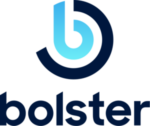Bring People Along for The Ride, Part II of II
Last week, I wrote about Bringing People Along for The Ride by involving people in the process of ideating and creating change in your organization. That’s the most important thing you can do to make it easy for people to handle change.
But what about the people you don’t or can’t bring along for the ride in that way? If you organization has more than 10 people in it, there will inevitably be people where you’re IMPOSING CHANGE ON THEM. And honestly, even people who are involved in designing change still have to live through its impact.
Today’s post is about managing the actual impact.
The best thing you can do as a leader in helping your organization navigate change is to be empathetic to the fact that, even if you involve people in designing the solution, you are, in fact, making changes to their day to day lives. One of the best books I’ve ever read on this is Transitions: Making Sense of Life’s Changes, by William Bridges. And while there’s a lot more to the book than this one point, I’ll share two graphics from the book and its offshoots that say a lot.
Bridges’ basic concept is to think about changes as having three phases. The end of the old thing, the beginning of the new thing, and the time between the two – when the new thing has been announced, but the it hasn’t taken effect yet. Here’s a look at one powerful graphic on this front, where the point is that productivity (the red line) tanks briefly during the time of uncertainty with the overlay of human emotions at each phase.

Next let’s look at Bridges’ model for how to think about these three phases. This part is critical. They are not discrete phases, where everyone finished “ending” and moves onto “neutral” and then moves on to “new.” From the moment a change is in the offing, until after the change is implemented, people are simultaneously operating in all three zones at the same time, in different proportions.

That means when change starts, you’re already helping them understand that there will be a period of confusion followed by a bright new future. And it means that even when the bright new future has arrived, you’re still mindful of the confusion as well as the things that were special about the past.
I wrote about this a little bit in the second edition of Startup CEO and in this blog post on transitions and integration. The paragraph I’ll call out is:
For ourselves as leaders and me as CEO, knowing most of us would leave almost immediately post-deal, I wanted to have as elegant an exit as possible after 20 years. Fortunately, I had a good partner in this dialog in Mark Briggs, the acquiring CEO. Mark and I worked out rules of engagement and expenses associated with “the baton pass,” as we called it, that let our execs have the opportunity to say a proper goodbye and thank you to our teams, with a series of in-person events and a final RP gift pack. This was a really important way we all got closure on this chapter in our lives
The Baton Pass is a helpful analogy to think about this process. In a relay race, the two runners run alongside each other for a little while until they are at the same pace and proper spot, THEN one hands the other the baton. It’s the time when the past and the future collide, in a neutral zone. When you mark the great things and painful learnings that came before and launch into the bright new future.
The best thing you can do as a leader who is driving change through an organization is to Bring People Along for the Ride. Part of that is involving people in the creation of the new world. But it’s also recognizing that humans have to process change, and that takes time.



